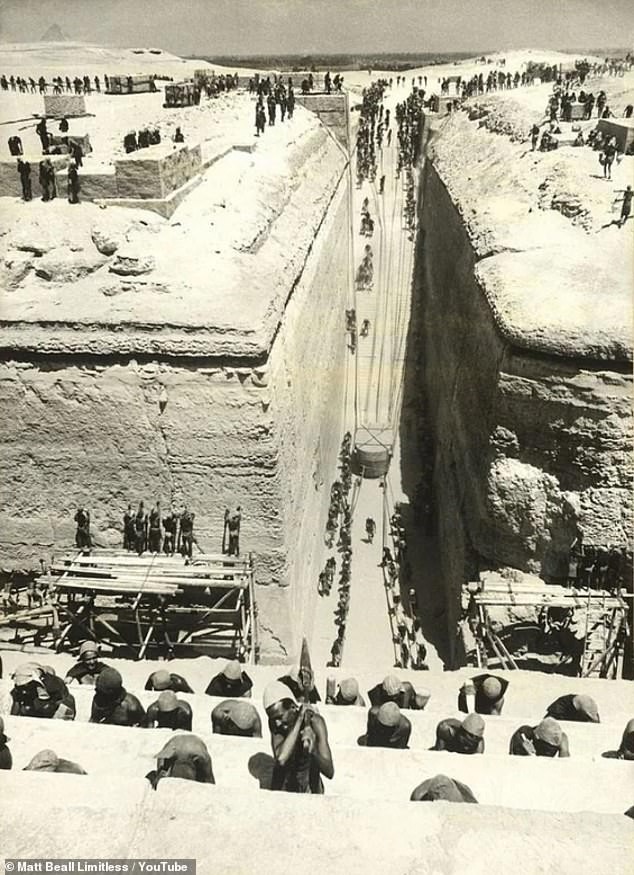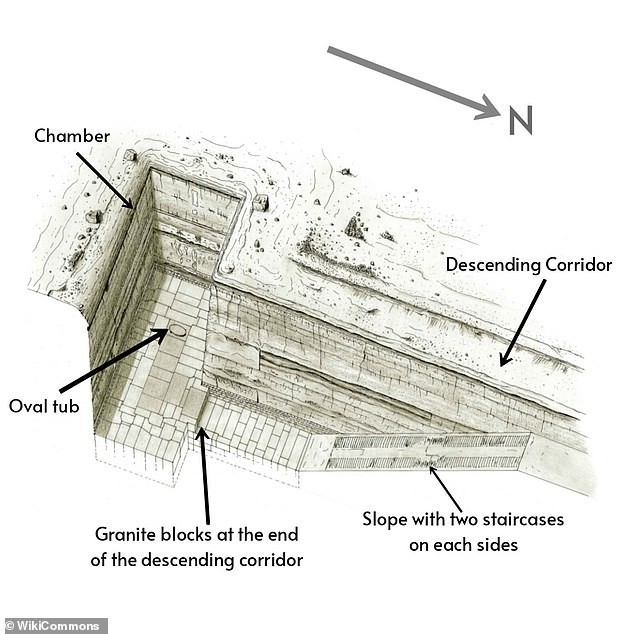Egypt's Area 51: A colossal, T-shaped shaft near the Giza pyramids sealed for decades
Three miles from the Giza Pyramids lies Zawiyet El Aryan, a site so secret it has earned the nickname Egypt's Area 51. For decades the military has sealed it off, blocking modern excavations and tours. Inside, a colossal T-shaped pit carves into solid limestone, descending nearly 100 feet and lined with massive granite blocks. At the center of a chamber sits an oval vat with a granite lid, reportedly containing traces of an unknown substance that have vanished over time.

In This Article:
Discovery and design: Barsanti’s early dig and the T-shaped shaft
Archaeologist Alessandro Barsanti began excavations there in the early 1900s. He uncovered a T-shaped pit carved directly into bedrock, nearly 100 feet deep, with smooth limestone walls and floors and supported by massive granite blocks. The shaft opens into chambers, with the end chamber unfinished and the floor finished in granite, where blocks weigh up to 18,000 pounds. The site's ultimate purpose remains uncertain, even in its earliest days.

Inscriptions and interpretations: Seba, stars, and the search for meaning
Graffiti scratched in black and red ink—read as 'Seba-[unknown]-Ka'—has fueled a range of theories. Some researchers translate it as the ancient word for a gateway to the stars, while others see it as a builder’s name or a figure from the era. Independent researcher Derek Olsen discussed the finding on the Matt Beall Limitless podcast, suggesting the structure could be a vessel for cosmic travel or spiritual ascent. Mainstream scientists caution against reading too much into a single inscription.

The central vat and the unfinished chamber: What lies at the core?
At the center of one chamber sits an oval vat with a fitted granite lid. Barsanti reported traces of an unknown substance inside, now lost to time. The tub measures roughly 10 feet long, 7 feet wide, and 5 feet deep, sealed with a granite lid, suggesting it was meant to be a closed container. The end chamber’s floor was finished with massive granite blocks, while the surrounding limestone walls remained smooth and were never clad with stone. The exact function remains a mystery—unfinished pyramid foundations or ceremonial space are among the possibilities.

Area 51 in the data age: Sealed, debated, and endlessly mysterious
In the 1960s the Egyptian military seized control of the site, halting modern excavations and tours. Barsanti’s early photographs remain the sole detailed record of the complex. The site, nicknamed Egypt's Area 51, continues to spark debate: was the damaged dedication tablet bearing King Djedefre’s name authentic, or is it a misinterpretation? Scholars point to a broader architectural theme—similar granite floors and lid-like features at other monuments such as the Great Pyramid, the Serapeum, and Saqqara—yet consensus remains elusive. The mystery endures, inviting ongoing inquiry into ancient science, ambition, and the limits of what we know.

